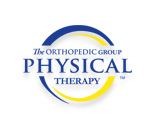Sprains and strains are the most common injury experienced by athletes as well as by people in the workplace. Many people use these terms interchangeably however they are two specific injuries. A sprain is a stretch or tear in a ligament (the bands of tissue that connect bones at the joints). A strain is also a stretch or tear of the muscle itself or a tendon (the tissue that connect the muscles to the bones).
Sprains usually happen when a person falls, twists, or is hit in a way that forces the body out of its normal position. The most common joints involved include the ankle, knee, thumb, finger, and shoulder. Strains happen when a person twists or pulls a muscle or a tendon. In the workplace, people at particular risk for sprains and strains are those who engage in frequent heavy lifting, which can include everyone from construction workers and laborers to warehouse workers and nurses.
Common symptoms of most sprains or strains are very similar: pain immediately after the incident. Sometimes a “popping” sound may occur and there is usually localized swelling. At times there can be bruising surrounding the area and individuals will have trouble moving the affected joint or muscle. Depending upon the severity of the sprain or strain, the pain may be mild, moderate, or severe.
As sprains/strains begin to recover, rehabilitation is helpful to regain strength and range of motion. Healing differs for each individual however; most mild to moderate injuries take around three to eight weeks to regain full mobility. More severe injuries can take months for full recovery. Many people make the mistake of being too eager to rush back to athletic activities or normal daily activities or some rest the injured area too long. If you do too much, too soon, you can reinjure the area and if you stay immobile for too long, scar tissue can form and lead to other impairments. It is best to pursue a gradual rehab program to get you back to your normal activities and help you to prevent further injury.
